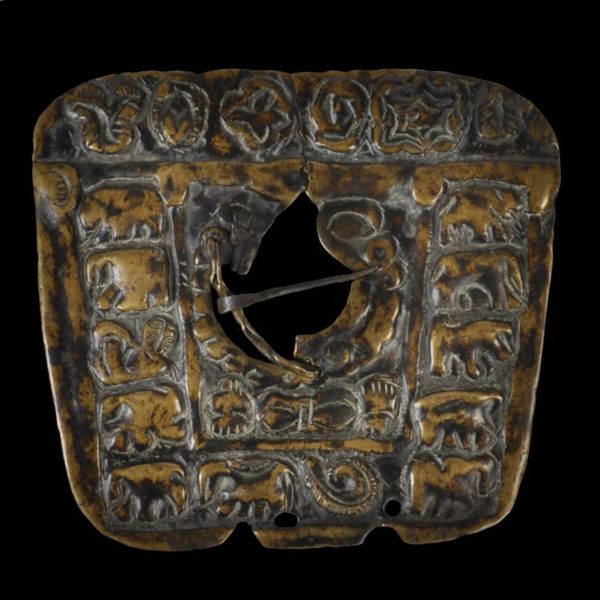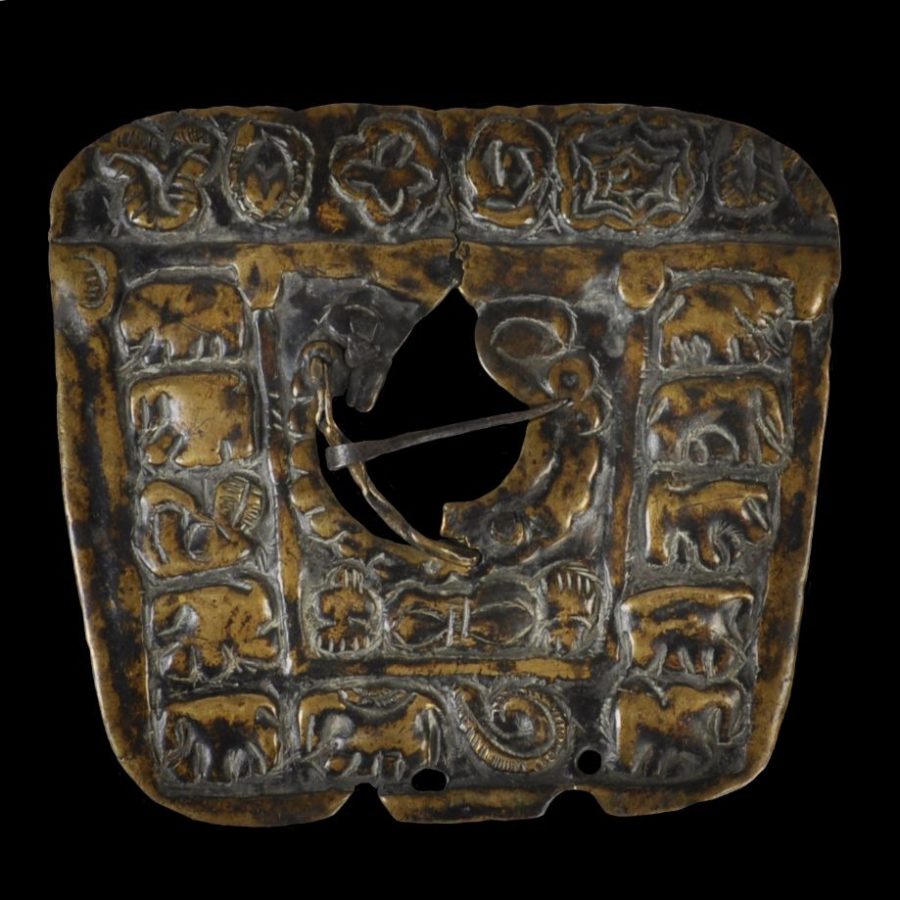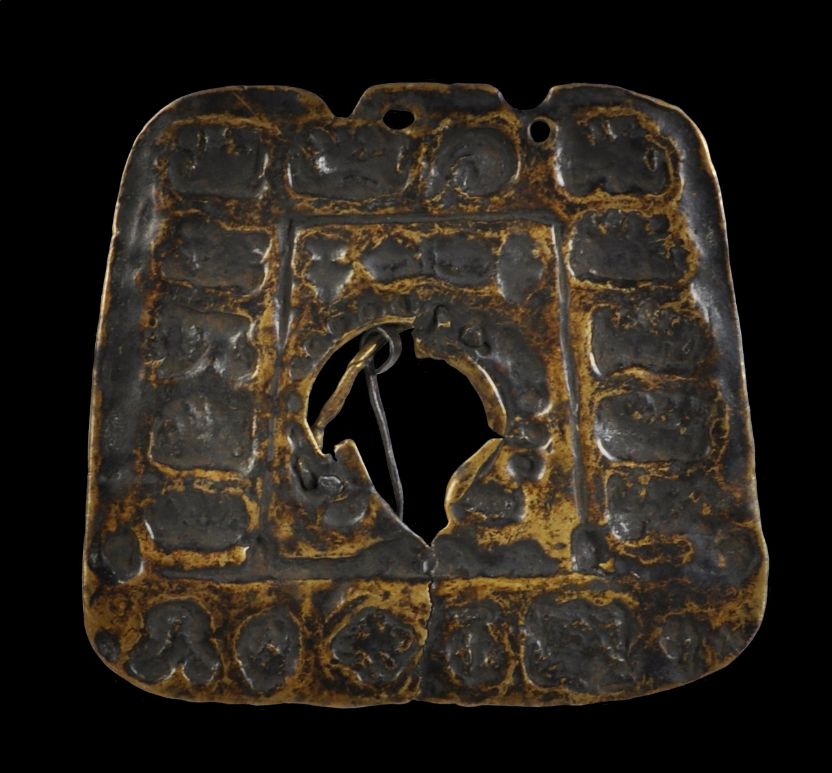This ancient cloak fastener or fibula is from Tibet. It has extraordinary age and wear, and seems to have been worn not only for practical purposes but also for talismanic or protective reasons. In this regard, the fibula might also have functioned as a tokcha.
(Tokcha or Thokcha is a term applied to small copper alloy talismanic forms worn in Tibet. The term tokcha derives from the Tibetan thog (thunderbolt) and Icags (iron or metal), so literally can be translated as ‘thunderbolt iron’ – according to belief, tokchas were formed when molten thunderbolts struck the earth and reacted forming the metal used to cast tokchas.)
It is decorated with the twelve animals of the Chinese zodiac. The panel across the top is likely to have been decorated with the eight auspicious Buddhist emblems. Only six are fully visible; the two at either end have largely been worn away. And yet the decoration also seems rendolent of the Bon religion – the ancient set of beliefs that held in sway in Tibet prior to the arrival of Buddhism.
A central aperture with a pin allowed the fibula to be affixed to the clothing it was designed to hold in place. There is a vajra motif beneath this aperture.
We have assigned a dating of 10th-12th century on the basis of the form and the wear which is consistent with tokchas that have been given similar published dates.
We are aware of one other published example – see Borel (1994, p. 168).
The example here has the most incredible wear and visible age. The contours and edges have been worn away from years of rubbing, some of which might have been ritual. There is an old crack in the metal to the top but this stable and itself has patina. Overall, this is a very fine, early item.
References
Borel, F., The Splendour of Ethnic Jewelry: From the Colette and Jean-Pierre Ghysels Collection, Thames & Hudson, 1994.
Heller, A., Early Himalayan Art, Ashmolean Museum, 2008.




